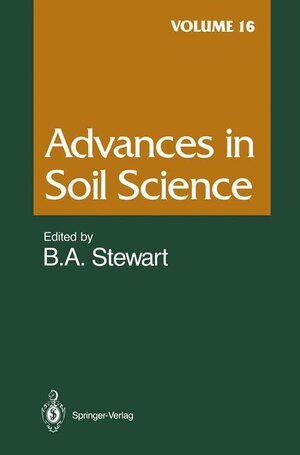
×
![Buchcover ISBN 9780387975191]()
Inhaltsverzeichnis
- Chemistry of Phosphorus Transformations in Soil.
- I. Introduction.
- II. Physicochemical Processes Governing Phosphorus Concentration in Soil Solution.
- III. Reactions of Phosphorus Fertilizers in Soil.
- IV. Chemistry of Phosphorus Transformations in Submerged Soil.
- V. Soil Organic Phosphorus.
- VI. Phosphorus Management Options.
- VII. Unresolved Challenges.
- References.
- Equilibrium-Based Modeling of Chemical Sorption on Soils and Soil Constituents.
- II. Selection of Solid and Aqueous Phase Components for Validating a Proposed Model.
- III. In Search of a Model: The Tools for Soil Chemists.
- IV. Use of Equilibrium-Based Models in Combination with Other Approaches for Modeling Sorption Reactions.
- Determination of Nutrient Availability and Elemental Toxicity by AB-DTPA Soil Test and ICPS.
- II. Theoretical Principles of the Ammonium Bicarbonate-DTPA (AB-DTPA) Soil Test.
- III. Theoretical Principles of Inductively Coupled Plasma Optical Emission Spectrometry (ICPS).
- IV. Elements Extracted with Ammonium Bicarbonate-DTPA.
- V. Analysis of Ammonium Bicarbonate-DTPA Extracts Using Inductively Coupled Plasma Spectometry.
- VI. Interpretation of Results.
- VII. Conclusions.
- Effects of Sewage Sludge Application on Soil Microbial Processes and Soil Fertility.
- II. Effects of Sewage Sludge and Heavy Metals on Soil Microbial Processes.
- III. Resistance of Soil Microorganisms to Elevated Heavy Metal Concentrations in Soil.
- IV. Conclusions.
- Estimating Soil Water Retention from Soil Physical Properties and Characteristics.
- II. Soil Physical Properties and Characteristics.
- III. Approaches for Estimating Soil Water Retention from Soil Physical Properties and Characteristics.
- IV. Water Retention Data Bases.
- V. Conclusions.




